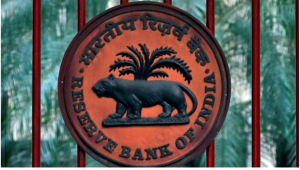ForumIAS announcing GS Foundation Program for UPSC CSE 2025-26 from 19 April. Click Here for more information.
Source-This post on Exchange traded currency derivatives (ETCD) norms is based on the article “RBI defers exchange traded currency derivatives norms” published in “The Indian Express” on 5th April 2024.
Why in the News?

Recently, the RBI postponed its new norms for the exchange-traded currency derivatives (ETCD) market from April 5 to May 3.
| Exchange Traded derivative 1. Exchange-Traded Derivatives (ETDs) are financial instruments traded on regulated exchanges, offering transparency, liquidity, and centralized clearing mechanisms. 2. They must follow regulations set by market regulators like the Securities and Exchange Board of India (SEBI) in India. 3. They get their value from assets like stocks, bonds, commodities, currencies, or indices. 4. Examples: |
What do the new norms say?
1. Now, rupee-denominated currency contracts traded on the National Stock Exchange (NSE) and the BSE require underlying exposure.
2. While traders aren’t obligated to provide evidence of underlying exposure for positions up to $100 million, they must confirm the presence of such exposure.
Note– The “underlying” in derivatives contracts refers to the order bill or receipt for exporters or importers, and supporting documents for remittances. For example, if an Indian exporter is expecting payment in US dollars in three months, this can be considered as the underlying contracted exposure.
3. The RBI stated that participation in rupee-involved ETCDs follows the Foreign Exchange Management Act (FEMA), 1999, and its regulations. These regulations allow currency derivative contracts involving the rupee, both over-the-counter (OTC) and exchange-traded, solely for hedging exposure to foreign exchange rate risks.
What was the previous practice?
1. Until now, currency traders had the liberty to engage in derivative market trading, whether they disclosed their underlying exposure or not.
2. Currency derivatives serve as a means to hedge forex risk.
UPSC Syllabus- Indian Economy




